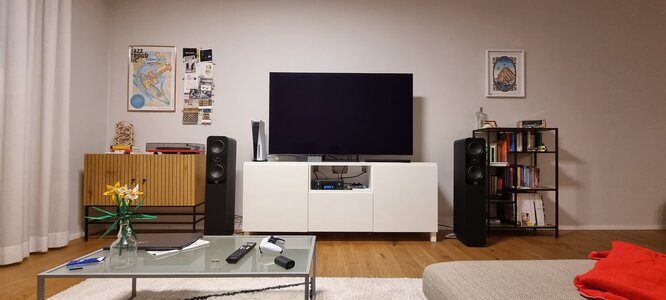I bought several systems for my parents before getting my own first system. I was not happy and thought if I changed the cartridge (one small change) it would magically be better. A dealer asked me to bring in my entire system and we did side by side comparisons with systems at different price points for me to compare and we also swapped out my amp for his and his speakers for mine etc. I had made excellent component choice just not the best match. More sensitive speakers worked better with my amp and just differently to their choice at that price point. My speakers needed a far more powerful and better amplifier to make them show what they can do. After that session I spent hours listening to set ups in the show room. switching source amp and speakers including some OTT priced ones that did nothing to my short list. Your ears, your budget, your choice.
I ended up spending ten times the amount on the turntable and upgrading to the nth degree everything. I kept them so far for 45 years. I have heard as good, different but not really better. Perhaps if I had the hearing of a 30 year old I might have a different view point. 20-20kHz well my 1980 speakers do that and most speakers even £15k ones simply do not.
In modern systems passive analogue speakers work and allow endless mix ,mis-match and struggle for the upgrade path piece by piece where one change makes for a magically better system (never does) but often is just different and some cases worse.
Active analogue speakers removed the need for a separate amplifier. The designer picked the best cabinet electronics and rivers for the price point so you don't have to. They plug into a pre-amp (for phono stage etc) or into an AV receiver for surround if wanted or with a toslink to RCA convertor to any aux input. They will scale up to 5.1 or 7.1.
Powered speakers often now are wireless and have built in streaming. Some have low end phono stages for tight budgets. They will not scale up to surround, Can have a sub added. Wireless to the primary speaker with secondary wired to the primary. External sources turntable, CD player, wired to it (not so nice) but some have a hub that can be hidden away acting like a pre-amp. HDMI input for stereo.
Wireless DSP streaming active speakers everything in the two speakers. Most have poor latency or if they have HDMI eARC are a stereo alternative to a sound bar. Some will scale up. WiSA is used by a number of manufacturers for stereo, 5.1, 7.1. Dali have their own wireless system. B&W Formation Bar, Bass and Flex to work with a television and the Formation Audio hub for inputs. Meridian have their speakerlink DSP system and B&O have powerlink in addition to WiSA choices.. Devialet have streaming speakers (optical from TV for stereo only) and separate Ethernet connected custom speakers for surround.
Some powered, active wireless speakers need the whole speaker in for repairs if the DAC or amp has a fault. Some can have the electronics removed yourself or by the dealer and just send that off - no different to getting a DAC or amp repaired. Some also allow for modules to be upgraded if wireless systems and connections change. Whether they do that every is another matter although B&O have made a four channel amplifier to fit into their 30 year old speakers to connect to a Raspberry Pi to get streaming services and convert the passive crossover CX50, CX75 and CX100 into active streaming speakers. They also have enable older systems to get connections to use with the latest products and mix in old speakers with current range for multi-room and multi-channel.
Streaming DSP active speakers have allowed improved bass, better extension, room correction and use smaller drive units and smaller cabinets for a better sound quality than cannot be done with passive speakers and separate amplifiers. The LS60 wireless speakers can not be built as passive speakers - the cabinet is too small, the drivers too small etc. At their current discount price they are a bargain.



